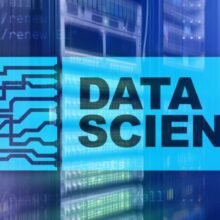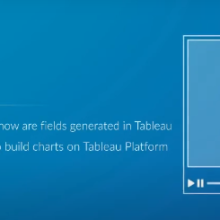Learn data science with Python through the Data Science with Python specialization on Coursera. This comprehensive program covers Python programming, data manipulation, data visualization, and machine learning. Enroll today to…
12 Best Spark Coding Questions with Answers and Code Examples You Should Know for Your Next coding interview

Preparing for a coding interview can be challenging, especially when it comes to technical coding questions.
In this blog post, we have compiled a list of the 12 best Spark coding questions along with their answers and code examples.
These questions cover a range of topics, from basic Spark operations to more advanced concepts. Read on to ace your next data job interview and master Apache Spark.

Introduction to the coding interview
Preparing for a data job or coding interview can be challenging, especially when it comes to technical coding questions.
In the field of big data processing, Apache Spark has become one of the most popular frameworks.
To help you ace your next data job interview, we have compiled a list of the 12 best Spark coding questions along with their answers and code examples.
These questions cover a range of topics, from basic Spark operations to more advanced concepts. Let’s dive in!
1. What is Apache Spark?
Apache Spark is an open-source distributed computing system that provides an interface for programming entire clusters with implicit data parallelism and fault tolerance.
It is designed to perform big data processing and analytics tasks efficiently and quickly.
2. How does Spark handle data storage?
Spark provides two main abstractions for data storage: RDD (Resilient Distributed Datasets) and DataFrames.
RDDs are immutable distributed collections of objects, while DataFrames are distributed collections of data organized into named columns.
Both RDDs and DataFrames offer fault tolerance and can be cached in memory for faster processing.

3. What is the difference between RDD and DataFrame?
RDDs and DataFrames have some key differences:
- RDDs are unstructured and lack a schema, while DataFrames have a schema and can be queried using SQL-like syntax.
- DataFrames provide optimization techniques like Catalyst Query Optimizer, which can significantly improve query performance.
- DataFrames can be seamlessly integrated with various data sources and tools, such as Hive, Parquet, and Avro.
4. How can you create an RDD in Spark?
You can create an RDD in Spark by parallelizing an existing collection, such as a list or an array, or by loading data from an external storage system, such as HDFS or S3.
Here’s an example of creating an RDD from a list:
val data = List(1, 2, 3, 4, 5)
val rdd = sparkContext.parallelize(data)
5. What are transformations and actions in Spark?
In Spark, transformations are operations that create a new RDD from an existing one, while actions are operations that return a value or write data to an external storage system.
Transformations are lazily evaluated, meaning they are not executed until an action is called.
Examples of transformations include map, filter, and reduceByKey, while examples of actions include count, collect, and saveAsTextFile.
6. How can you perform a join operation in Spark?
To perform a join operation in Spark, you can use the join method on two RDDs or DataFrames. Here’s an example of joining two DataFrames based on a common column:
val df1 = spark.read.csv("path/to/file1.csv")
val df2 = spark.read.csv("path/to/file2.csv")
val joinedDF = df1.join(df2, df1("commonColumn") === df2("commonColumn"))
7. What is the purpose of Spark SQL?
Spark SQL is a Spark module for structured data processing that provides a programming interface for querying structured and semi-structured data using SQL-like syntax.
It allows you to seamlessly integrate SQL queries with Spark programs and provides optimization techniques for efficient data processing.
8. How can you cache data in Spark?
You can cache data in Spark by using the cache method or the persist method.
Caching data in memory can significantly improve the performance of iterative algorithms or repeated computations. Here’s an example of caching an RDD:

val rdd = sparkContext.parallelize(data)
rdd.cache()
9. What is the purpose of Spark Streaming?
Spark Streaming is a Spark module that enables scalable, high-throughput, fault-tolerant stream processing of live data streams.
It allows you to process real-time data from various sources, such as Kafka, Flume, and HDFS, and perform near-real-time analytics on the streaming data.
10. How can you handle missing or null values in Spark?
In Spark, you can handle missing or null values using the na functions.
The na functions provide various methods, such as fill, drop, and replace, to handle missing or null values in DataFrames.
Here’s an example of filling null values with a specific value:
val filledDF = df.na.fill(0)
11. How can you optimize Spark jobs for better performance?
To optimize Spark jobs for better performance, you can consider the following techniques:
- Partitioning data appropriately to reduce data shuffling.
- Using broadcast variables for small data that needs to be shared across tasks.
- Using appropriate data structures, such as DataFrames, for efficient query execution.
- Tuning Spark configurations, such as memory allocation and parallelism settings.
12. How can you monitor and debug Spark applications?
You can monitor and debug Spark applications using the Spark web UI, which provides detailed information about the application’s progress, resource usage, and DAG (Directed Acyclic Graph) visualization.
You can also enable logging and use the Spark driver’s log files to troubleshoot issues.
Additionally, you can use tools like Spark’s built-in metrics system and external monitoring tools, such as Ganglia or Grafana, for advanced monitoring and analysis.

Conclusion
Mastering Spark coding questions is crucial for success in data job interviews. By familiarizing yourself with these 12 best Spark coding questions, along with their answers and code examples, you will be well-prepared to tackle Spark-related challenges in your next data job interview.
Remember to practice implementing these concepts in real-world scenarios to solidify your understanding. Good luck!
https://itexamsusa.blogspot.com/2023/12/mastering-matlab-programming-for.html
https://itexamsusa.blogspot.com/2023/12/monolith-vs-microservices-which-one-is.html
https://itexamsusa.blogspot.com/2023/12/publicprivate-keypairs-and-generating.html
https://itexamsusa.blogspot.com/2023/10/exam-dp-203-data-engineering-on.html
https://itexamsusa.blogspot.com/2023/10/ccnp-enterprise-advanced-routing-enarsi.html
https://itexamsusa.blogspot.com/2023/10/red-hat-certified-engineerrhce-ex294.html
https://itexamsusa.blogspot.com/2023/09/github-actions-to-auto-build-your.html





